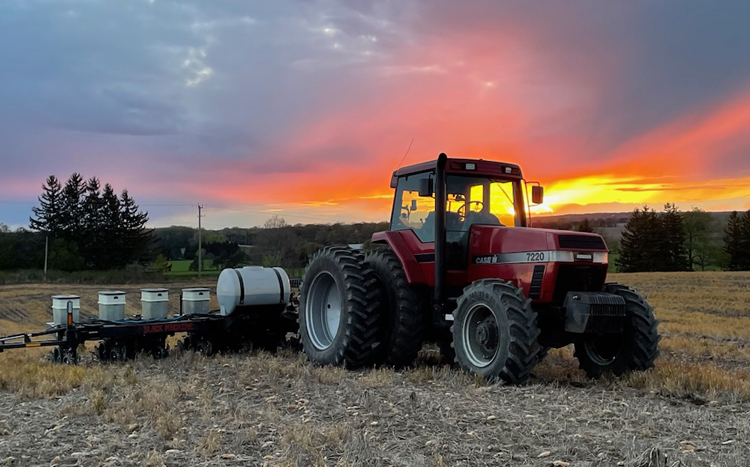SUSTAINABLE FARMING PRACTICES: HEALTHIER SOIL THROUGH REGENERATIVE AGRICULTURE


Ontario dairy farmers are proud to have a long history of implementing and refining practices to preserve the health of the land and care for the environment. They are stewards of the land, looking to maximize the overall productivity of their soil by ensuring exceptional soil health and biodiversity through regenerative agricultural practices. Regenerative agriculture seeks to create farming systems that are not only productive and profitable but also environmentally sustainable, resilient, and capable of supporting healthy ecosystems and communities over the long term.
Protecting soil with plants
What is regenerative agriculture?
Regenerative agriculture is generally known as a collection of farming practices that aim to support and enhance soil health for generations to come.
Andrew Campbell, a dairy farmer from Middlesex County, places an emphasis on cover cropping to support soil health. Cover cropping helps to protect against erosion and improves nutrient levels, water retention and soil structure. When cover crops reach the end of their life, they decompose into the soil and release nutrients. All of this boosts crop health and productivity while increasing field resilience.
What is cover cropping?
Cover crops are crops (eg rye) that are planted to cover and protect the soil. They help to mitigate against soil erosion from wind and water, increase oxygen and moisture in the soil, support carbon sequestration and trap excess nitrogen, keeping it from leaching into groundwater or running off into surface water, and releasing it later to feed growing crops.
“If we can improve our soil through cover crops, we can produce better crops, have fewer weeds and can take better care of the land,” says Campbell.
Cover crops can also be harvested, making more efficient use of the land and resources available, while simultaneously minimizing the use of non-renewable resources.
“We also take our cover crops and add those into our cow feed,” says Campbell. “This helps us reduce the acres we need to grow crops that feed our cows. We have made one acre of cover cropping land twice as efficient.”
Minimizing tillage to support carbon sequestration
Dan Breen, a dairy farmer from Putnam, Ontario is a strong advocate of no-till farming, where crops are grown with minimal disturbance to the soil. Soil tilling involves breaking up the top layer of the soil and allowing moisture to leave and air to pass through. Many Ontario dairy farmers, like Dan, see the benefit in maintaining the soil’s structure and allowing for greater carbon sequestration (soil’s ability to store or hold carbon).
“Carbon that is taken out of the atmosphere by plants goes into the roots,” says Breen “Whenever you till, you disturb those roots and the carbon leaks back out. So, we want to collect as much energy and carbon as we can and put it back in the soil.”
Minimal or no-till farming can also work hand in hand with cover cropping, a practice Breen also uses on his farm.
Similar to cover cropping, keeping the soil intact can eliminate erosion from wind and rain. Cover cropping can also help a farmer transition to a no-till process. Breen notes that soil does go through a transition when a farmer first decides to commit to reducing tillage. Soil needs water and air – that’s why some farmers use tillage, to prepare the soil for planting. Over time, when reducing tillage, micro holes can develop in the soil through worms, roots and plants. Cover cropping can help open up the soil slowly and gradually, supporting a smoother transition to minimal or no-till farming.
“Regenerative agriculture is not just about putting back what you take out of the soil. It’s about putting back more than you take out, with the intent to build better soil,” says Breen.
Looking forward
Cover cropping and minimal or no-till farming are key practices that support regenerative agriculture. Both have a direct impact on improving soil health, increasing field resilience and mitigating impact from adverse weather events.
Resources such as Dairy Farmers of Canada’s Best Management Practices Guide to Mitigate Emissions on Dairy Farms are helping farmers across the country implement more sustainable practices, processes and procedures, supporting DFO and DFC’s commitment to net zero by 2050.
